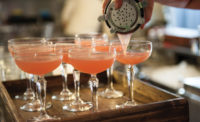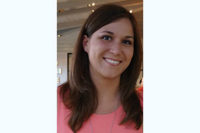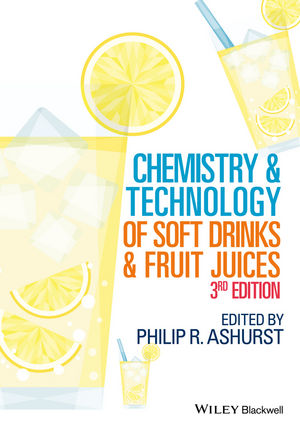Know Your New Product Consumers
By ELIZABETH FUHRMAN
Exclusive research shows when, where and why consumers choose new products
Do you know what type of new beverage consumers are most likely to try? Do you know where they are most likely to pick those products up? Do you know why?
Beverage Industry wanted
to know the answers to these questions and to delve deeper into the
ever-increasing number of new product launches in the beverage market.
Through an original research survey conducted for Beverage Industry by
InsightExpress, an online market research firm headquarted in Stamford,
Conn., the magazine surveyed consumers (split equally between males and
females) who have purchased new beverage products within the past year.
In the survey, 41 percent said of their attitude
toward new beverage and food products that they, “love to try new
things. I’m always looking for the newest thing.” This is great
news for many beverage categories that are seeing growth from new product
introductions. Another 30 percent said they have no problem trying
something new if it is from a company they trust (see Figure 1).

Even more overwhelming, 90.6 percent of those surveyed said they would recommend a new beverage product they liked to a friend or family member. And just confirming the influence one person’s opinion can have on another, 57.6 percent said they were likely to try a new drink if restaurant wait staff or servers go out of their way to suggest it.
Tom Vierhile, director of Productscan Online, a global
database of new products, says Productscan’s surveys have pulled up
the fact that more than three-quarters of consumers are programmed to seek
out new products. “They enjoy trying new things, which is good
because that sort of behavior keeps everyone in business,” he says.
Beverages are one of the easiest categories in which
to sample new products, Vierhile continues. “It’s not like
preparing a meal. Let’s say someone is preparing a new dinner item.
If you prepare a meal and nobody likes it, you have to prepare another
meal, whereas with a beverage the amount of risk is very low. If you
don’t like the drink, you can just pour it down the sink and try
something else.”
Choose me
With all the new beverage options, Beverage Industry was interested
in discovering which beverage categories were receiving the most trial.
Alcohol beverages are leading the other categories in new product
introductions, with 1,078 new products so far this year, according to
Productscan Online, so it should follow that the most trials would be in
this category. This was not the case. New soft drink purchases led the
results of the survey, with 62.8 percent of respondents indicating they
have purchased a new soft drink during the past year (see Figure 2). But
only 175 soft drinks have been introduced so far this year — nearly
800 less than the spirits category. What’s the explanation?

“The soft drink industry is training people to seek out new products,” Vierhile says. “Even the big guys are coming out with limited-edition flavors, and consumers are beginning to see there is more flavor activity going on in the category. Whether that really nets anybody any sales gains is another thing, but it is teaching consumers to seek out and try new products. It’s also trying to create some excitement there.”
New alcohol beverages did rank second with a combined
58.4 percent of those surveyed purchasing a new beer, liquor or wine
product this year.
Almost 30 percent of those surveyed said they
purchased a new energy drink this year, which placed the category below
soft drinks, beer, wine and spirits, bottled water, tea and juices drinks.
Energy drinks are growing more than twice as fast as any other beverage
category according to Information Resources Inc., and the category leader,
Red Bull is losing market share, which should indicate that consumers are
trying other energy drinks. But new product launches are down about 11
percent so far this year, with 206 launches, according to Productscan.
While Productscan is reporting more niche energy
drinks, such as tea-based energy drinks, the saturation of energy drink
products makes it hard for a drink to stand out.
“One reason there has been a lot of activity in
the category over the past few years is that it doesn’t have the
barriers to entry that soft drinks have as far as shelf space,”
Vierhile says. “People are willing to give these products a try, but
that is tightening up too. We’re going to continue to see new energy
drinks out there, but the category has really been done to death.
“The category is maturing,” he continues,
“and as the category matures it is going to be harder for new
entrants to come in.”
By age, every age group surveyed ranked soft drinks as
the No. 1 beverage category in which they had purchased a new product
during the past year. Eighteen to 24 year olds placed new energy drink
purchases second and bottled water third. Twenty-five to 34 year olds
switched the order, but still placed bottled water purchases second and
energy drink purchases third. For 35 to 44 year olds, those surveyed
purchased new bottled water and then tea drinks most often.
Interestingly, 45 to 54 year olds and consumers 65 and
older placed new juice drink purchases second and new tea purchases third.
For the 55 to 65 year old range, tea ranked second in purchases and bottled
water placed third.
Channel choices
So we know that consumers are trying new beverages. We
know which ones they are more likely to try. The question now is where?
Respondents were allowed to select every retail
channel in which they would be most likely to purchase a new beverage.
Sixty-nine percent of consumers chose traditional grocery stores (see
Figure 3). Wal-Mart placed as the second most chosen location with 50
percent, followed by convenience stores, with 42 percent, and mass
merchandisers and supercenters with 30.6 percent.

While the assumption often is that convenience stores offer the best venue for new product trial due to the location’s selection of single-serve sizes and grab-and-go convenience, the impact of grocery stores shouldn’t be discounted. The advantage that grocery stores offer to new products is the frequency that shoppers stop at the locations. Consumers could potentially be exposed to a new product every week during their routine grocery shopping trip.
But grocery stores still have room for improvement.
“Grocery stores really make little effort to
showcase new products in the beverage section,” Vierhile says. The
areas where consumers do tend to notice new products at supermarkets are
the bottled water and fruit drink aisles.
Frequency and friendship
Most respondents (52.4 percent) said they purchase a
new beverage less than once per month (see Figure 4). More encouraging are
the 23.6 percent of respondents who said they purchase a new drink about
once per month, which amounts to about 12 new beverage products tried each
year. About 18.6 percent said they purchase a new beverage a couple times
per month, and 5.4 percent are willing to try a new product about once a
week.

When asked how likely new product consumers were to purchase a new beverage product this year compared to last year, 53.2 percent said they were somewhat more likely, 39 percent said they were very apt to do so and 7.4 percent said they were not as likely.
Consider, too, that just because consumers are
purchasing new beverages, it doesn’t always mean those purchases are for their own consumption. When asked to choose
all the people for whom they have bought a new beverage this year, 91.2
percent purchased the new product for themselves, another 32.8 percent of
those surveyed purchased a new beverage for another family member, 19.6
percent for a child, 15.6 percent for a friend, 15.4 percent purchased a
new product for a party or event and 11 percent bought a new beverage as a
gift for someone else.
In an effort to find out how important friendship and
other outside influences are in new beverage purchases, the survey asked if
the new product seekers would be more likely to buy a new beverage product
because a friend suggested it, and 62.2 percent said yes (see Figure 5).

But 63.2 percent of consumers who had already sampled a new beverage said they would be more likely to purchase it, placing sampling slightly higher than a friend’s recommendation. More than 53 percent of those surveyed said they would be more likely to buy a new beverage because they saw it on display in a store, and 36.4 said they were more likely to purchase the new drink if they saw it advertised on television.
Product preferences
What qualities must a new
product have for a consumer to take a chance and try it?
When asked to rank perceived quality, cost, brand
name, packaging and flavor in the order of importance in selecting a new
beverage, 55.4 percent of those surveyed said flavor was the most important
factor. Cost came in second, followed by perceived quality and brand name.
Packaging ranked as the least important feature.
The fact that flavors placed first really isn’t
that surprising, Vierhile says.
“People like to try new flavors of
beverages,” he states. “They are looking for different
experiences, and with beverages it is a very easy way to try new and
different flavors.”
What is surprising is how low packaging rates to these
new beverage samplers. “If you talk to beverage companies a lot of
their marketing push is all about packaging,” Vierhile says.
“This might be a sign that consumers really don’t see a lot of
difference between beverage packaging to begin with.”
But new packaging launches
have provided successful results for some categories such as dairy drinks.
The releasable container has moved dairy drinks into fast food chains,
further into school foodservice and into vending.
In defense of packaging, Pauline Tingas, senior editor
of Beverage Industry’s sister publication Brand Packaging, says the benefits of packaging tend to be more intuitive.
Consider the in-store buying experience: How does any beverage reach
through the clutter to grab consumer’s attention? What grabs a
shopper’s eye so that a new beverage even enters the consideration
set?
“Typically, it’s packaging,” Tingas
says. “The color, shape and structure of a package is what brings
customers to the shelf to examine and pick up a particular beverage package
and then consider things like flavor. Consumers, though, may not be as
conscious of that behavior.”
Trying to dive further into how important brand
recognition is or isn’t for a new beverage product, the surveyed
asked consumers how often they compare prices between a new beverage
product and a leading brand. The majority (53.6 percent) of those surveyed
said they always or often compare the new beverage to the recognized brand
(see Figure 6). Another 34.2 percent said they sometimes compare brands.
Only 12.2 percent said they rarely or never compare prices between brands.

More than 66 percent of consumers also said that they
would be more likely to purchase a new beverage product with a coupon. But
when asked if they would only purchase a new beverage if it were on sale,
39.4 percent of those surveyed disagreed with that statement. While
discounting may make a new product purchase less risky in the
consumer’s mind, price is not an absolute in determining a purchase.
When asked if price keeps consumers from purchasing more new beverages,
those surveyed were nearly equally split.
Trend tracking
The survey asked new beverage consumers to select
attributes and claims that would make them more likely to try a new
beverage. Following is a breakout of the percentage of those surveyed who
would be swayed to buy a product because of the specific trait:
| • Sugar-free/No sugar added | 38.2% |
| • Low-calorie | 36.4% |
| • All natural | 34.8% |
| • Exotic flavor | 34.6% |
| • No high fructose corn syrup | 30.4% |
| • Vitamin fortified | 30.2% |
| • Diet | 29.4% |
| • Contained Antioxidants | 29.2% |
| • Helped with weight loss | 28.6% |
| • Energy enhancing | 25.8% |
| • Calcium fortified | 22.0% |
| • Non-caffeinated | 20.8% |
| • Electrolyte replenishing | 19.6% |
| • Organic | 17.8% |
| • Rich in fiber | 16.4% |
| • Protein fortified | 15.6% |
| • None of the above | 13.6% |
| • Fair trade | 10.6% |
| • Higher alcohol content | 10.6% |
| • Offered beauty benefits | 0.7% |
| • Lower alcohol content | 0.4% |
A surprise from this survey is that concern about sugar ranked as high as it does, including consumers’ negative perception of high fructose corn syrup, Vierhile says. “You kind of wonder if people are saying this because they think they should or because they really mean it,” he says.
Vierhile believes the survey shows the market is ready
for more new beverages that help with weight loss. “The market is
ripe for something beyond diet drinks,” he says. “Diet is just
kind of passive. If people really could drink something that would help
them keep off the weight, that would really be the next step.”
A drink that is energy-enhancing and calorie-burning
also might be something that catches fire with consumers, he says.
But with any claims or supplements, there are
significant issues regarding believability with consumers. Companies are
getting away from benefit-oriented claims, and they are trying to express
their products’ benefits through the use of ingredients.
“The ingredient itself is carrying much more of
the weight now,” Vierhile says.
Products are using more pomegranate, acai, goji
berries, mangosteen and even black currants and blueberries. These
ingredients are linked to the “super fruit” concept, Vierhile
says, and consumers are seeking them out.
Many companies were burned with the low-carb fad, and
many companies may be reluctant to go out there and have their whole front
label telling consumers what is good for them, Vierhile says.
“We’re seeing a more back-to-basics move now.”
Consumer Feedback
New beverage consumers had this to say about their
purchases:
15%
would try a new beverage product because they like the
packaging.
15%
would try a new beverage product because they know
none of their friends have tried it.
31%
will only purchase a new beverage product if it is
on sale.
36%
said price keeps them from purchasing more new
beverage products.
37%
would be more likely to try a new beverage product if
a friend was trying it at the same time.
38%
would buy an unknown company’s new beverage
product.
55%
are less likely to purchase a new beverage product at
a bar or restaurant than an off-premise location.
63%
are more likely to purchase a new beverage product
when grocery shopping.
66%
would be more likely to purchase a new beverage
product with a coupon.
70%
would purchase a new beverage product from a company
with which they are already familiar.
74%
are more likely to buy a new beverage product that
they have sampled first.
86%
would buy a new beverage product because it is a
flavor they like.


